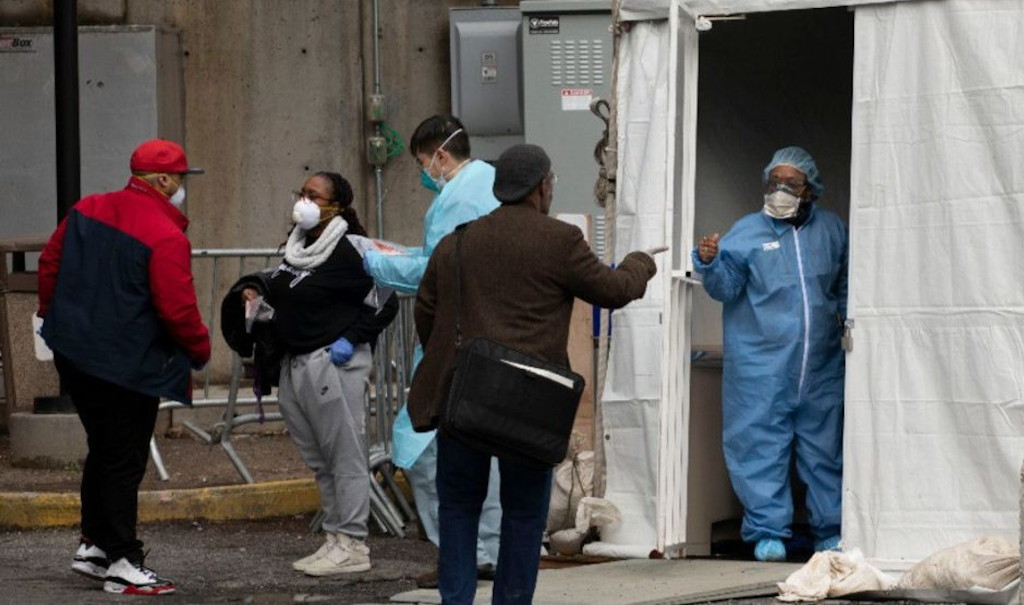As COVID-19 spreads over Canada and the rest of the world, seniors are being especially hard hit. In our country, the vulnerability of our elders seems especially evident if they are in some sort of care facility. Care home after care home is being locked down due to the virus, and the death toll in these facilities accounts for about half the fatalities in Canada. Our capitalist political leaders are lining up to issue heart-felt pleas to protect our older citizens.
Canadians listening to these calls for compassion should remember that the care system that is falling apart at the moment was, in most cases, put together in the last 20 years or so by governments controlled by the same political parties whose leaders are wailing now.
Not so long ago, most elder care in Canada was paid for and administered by Provincial Governments. Starting in the 1980s and accelerating through the 1990s and early 2000s there was a wave of privatizations of public services. Governments across the country, and around the world, embraced what is called neoliberal economic policy, which holds that the private sector can provide services to citizens more efficiently than the public sector.
At the time there was some pushback, but governments managed to get away with it, promising no cutbacks to services and, at the same time, significant savings to the taxpayer, which would lead to more money in your pocket, especially if you’re rich and have bigger pockets to fill.
One major target of these privatizations were seniors’ homes. Unfortunately, in their selling job to the people, the political leaders didn’t explain that “efficiency” means something a bit different to a capitalist businessperson than it does to us ordinary folks.
We might think it has something to do with making a service faster or better. It does not. “Efficiency” is the provision of a specified product or service at the lowest possible cost. As governments rolled out their neoliberal plans for a better world through privatization and efficiency, a series of completely predictable negative consequences began.
First of all, if you want to privatize a service, you have to define what that service is. Unless you do this, you can’t put a tender out and accept bids. As governments moved to sell off seniors’ care, they looked at what services were being provided and their costs. Then they put together a package that provided equivalent or similar services which at the same time cost the government less and provided an acceptable profit margin for the private service provider. Generally, the companies who would be bidding on and profiting from getting these contracts would be called in as consultants when these packages were being put together.
Once a contract is awarded for a care home or group of care homes the process that increases the capitalist version of “efficiency” really starts. Usually all the staff is laid off and then given the, ahem, opportunity to get their job back at substantially less pay. Less skilled staff like cleaners and care attendants often take more than just a pay cut. They are often hit with a cut in hours too, since keeping workers under a certain threshold of hours reduces the amount of benefits the employer is obligated to pay, thus increasing profits. Their sick days and vacation are also cut back, which gives these workers a choice of no pay or working when they are ill. There is also a drive to reduce the workforce to a minimum. After all, if three workers can do the work of four, it is more efficient (profitable) to hire three.
Canadians should look at the tragedy unfolding in seniors’ homes today and think about how just these few changes to staffing, in the name of greed, contributed to increasing the death toll. Low rates of pay contribute to high rates of turnover, as does burnout among skilled staff such as nurses, who are often doing work done by several people in less efficient times when patients mattered more than the bottom line. For less skilled workers such as cleaners and care attendants, rock-bottom wages and a carefully crafted “efficient” number of hours meant having to work at more than one of these facilities guaranteeing that an infection in one care home could be quickly and efficiently spread through the whole system.
There were many other “efficiencies” achieved by corporate care-providers that enhanced their profits, such as skimping on stores of medical supplies and protective equipment. The results of all these “efficiencies” are exhausted medical staff struggling, at times without proper equipment, to contain outbreaks amid growing infection rates among their support workers. These workers have in turn spread the virus to multiple sites where they have to work to make ends meet. The delusion that nothing can be done by the human race without creating efficient profits for the 1% has created the conditions for the disaster we see today.
It is time to demand a different definition of efficiency, a definition focused on achieving optimal public good for optimal public cost.
Privatized seniors care was in trouble even before COVID-19. There were almost weekly stories of neglected seniors becoming ill or dying as a result of the fact that staffing and supplies were stretched beyond the breaking point. Any savings that Canadians may have realized through years of our leaders’ devotion to the capitalist version of efficiency are gone now, washed away in the vast flood of cash unleashed by government to fight COVID-19 in the ruins of a system of care infrastructure left to rot for profit.
Canada is not just paying with money either. People are paying with their lives too. It is time, long past time, for Canadians and working people around the world to take power from the 1% and their apostles of efficiency and build a just and humane socialist future for the 100%.




